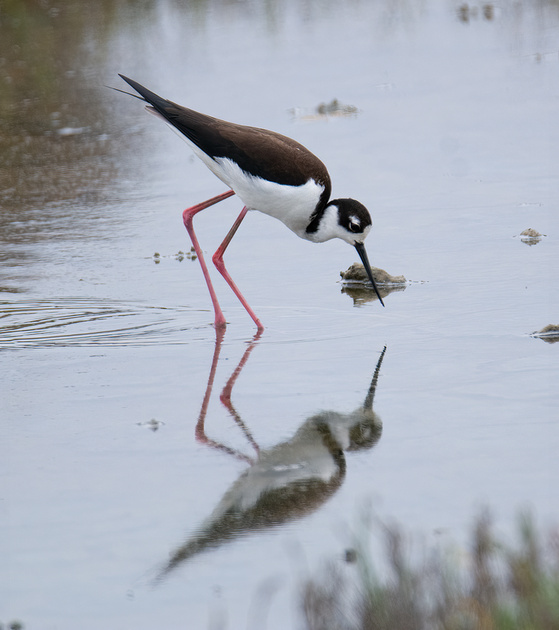Sights of May 2024 - The Merry Month of May
The start of May is marked by the late migrant birds. I saw Western Tanagers, Swainson's Thrushes, and a few Flycatchers. In mid-May we start to see the fledglings of our resident birds such as young California Towhees, Orange-crowned Warblers, Swinhoe's White-eyes (not native but now resident), Black Phoebes, House Finches, and a Killdeer pretending to have a broken wing to lead us away from its nest. By the end of May, things get a little quiet as migration tapers off, and I turn to other things for amusement.
I had a bit of excitement when I watched a Great Blue Heron go after a Southern Alligator Lizard. I was impressed with the fight the lizard put up. It tried to wrap its long tail around the bill of the heron to keep from being swallowed. At one point the tail was broken off, and the lizard bit at the base of its own tail to form a donut around the lower bill of the bird. The bird could not swallow nor get at the lizard. Eventually the bird put its head back in the grass, presumably to drop the lizard and get a better bite on it. Because of the tall grass, I did not see what happened nor who was victorious. You can assume the ending you prefer. Warning: my photos capture the action, including the broken tail.
One bird that was found by the birding community in May, was a Yellow-headed Caracara. It is a member of the Falcon Family. These birds are found in South America and as far north as Costa Rica. That's a long way from LA. Further, they are not known to be migratory. The origin of our local bird is a great mystery. I photographed it in a Popeye's parking lot in Lomita, where it was dumpster diving. When it was first found in Lomita, it created quite a stir among birders, lighting up chat groups and messaging apps. Locals say the bird may have been around for as much as two years, but was only now discovered by birders. Is it possible it came aboard a cargo ship? It is not unusual for interesting non-native species of various types to hitch a ride on a ship and find themselves in a whole new world. Whatever its origin, it was fun to photograph, and it is a beautiful bird.
My yard has been blooming and buzzing. I have been enjoying seeing how different species of bees carry the pollen. Some use the pollen baskets on their legs, while others use the hairs under their abdomen. The color of the pollen reflects which flowers they prefer. Night visitors to my yard, aside from wandering cats, included striped skunk and Virginia opossum on multiple nights, and one visit from a racoon.
My wetlands bird survey was pleasant, but other than a couple of young Red-tailed Hawks, it was uneventful.
Happy nature watching.
Follow me on Facebook: https://www.facebook.com/KimMooreNaturalist/
|
How to view photos with species names:
|
Watch the slideshows or click on the links to look through at your own pace. Links open in a new tab.
Local Stuff: https://kimssight.zenfolio.com/new_may-2024

Caracara: https://kimssight.zenfolio.com/caracara

Los Cerritos Wetlands Monthly Survey: https://kimssight.zenfolio.com/hellman_may_2024

